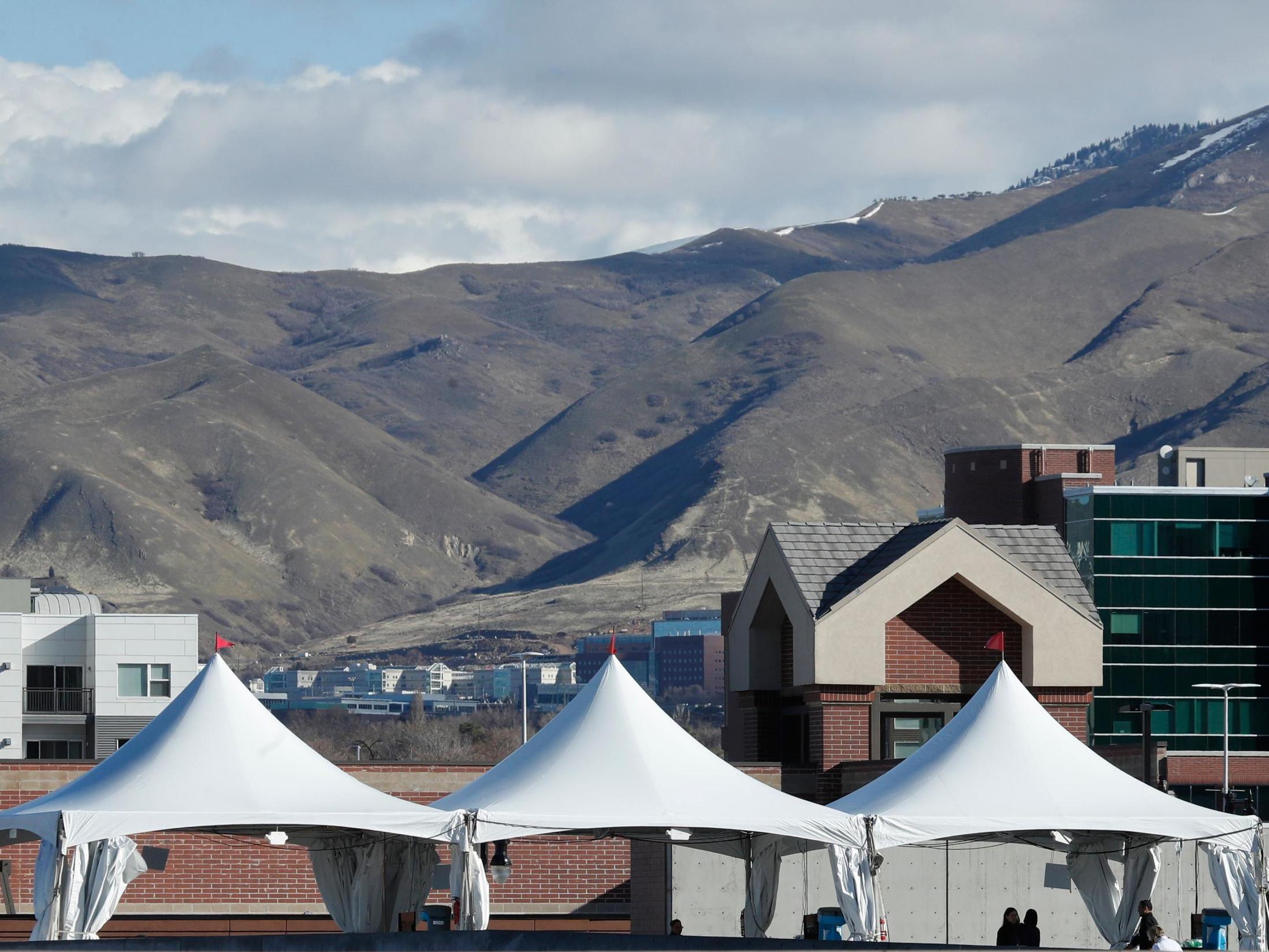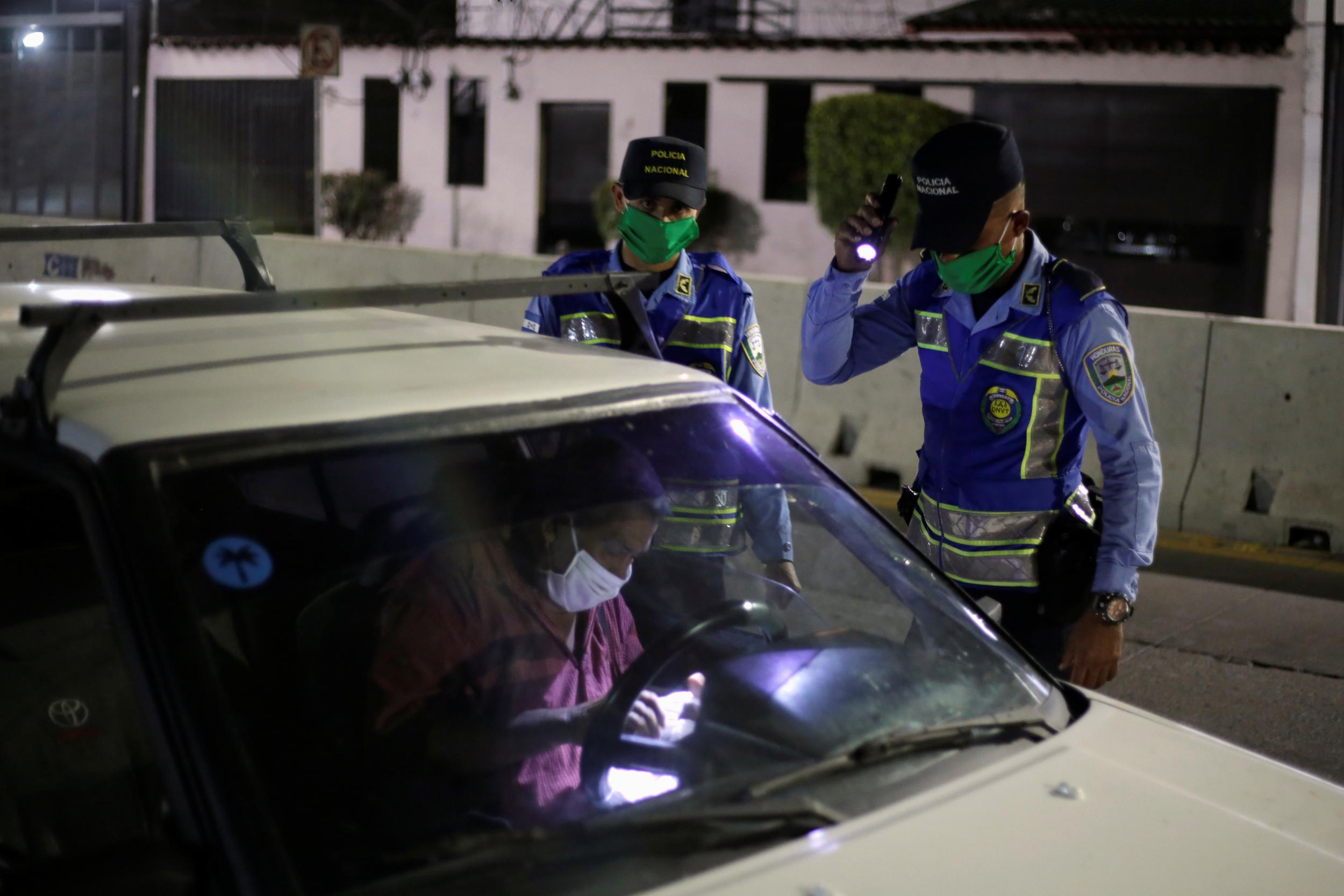Coronavirus: US and Europe told to learn from past Asia pandemics to beat virus

Your support helps us to tell the story
From reproductive rights to climate change to Big Tech, The Independent is on the ground when the story is developing. Whether it's investigating the financials of Elon Musk's pro-Trump PAC or producing our latest documentary, 'The A Word', which shines a light on the American women fighting for reproductive rights, we know how important it is to parse out the facts from the messaging.
At such a critical moment in US history, we need reporters on the ground. Your donation allows us to keep sending journalists to speak to both sides of the story.
The Independent is trusted by Americans across the entire political spectrum. And unlike many other quality news outlets, we choose not to lock Americans out of our reporting and analysis with paywalls. We believe quality journalism should be available to everyone, paid for by those who can afford it.
Your support makes all the difference.When authorities in Wuhan announced on 31 December that they had detected a cluster of viral pneumonia in the Chinese city, with 27 cases linked to a seafood market, they said the disease was preventable and controllable, with “no obvious signs of human-to-human transmission”.
But in wealthy places on China’s periphery – Hong Kong, Taiwan and other nations – a rapid response swung into action. One reason was that they had learned from the past.
“We were the Sars countries,” said Leong Hoe Nam, an infectious-disease specialist at Mount Elizabeth Hospital in Singapore who contracted severe acute respiratory syndrome during the 2002-2003 outbreak. “We were all burned very badly with Sars, but actually it turned out to be a blessing for us.”
Political will, dedicated resources, sophisticated tracking and a responsible population have kept coronavirus infections and deaths in Taiwan, Hong Kong and Singapore relatively low. South Korea, with more deaths, has led the way in widespread testing. Now, after seeing unprecedented increases of imported cases, Taiwan, Hong Kong and Singapore have all moved to implement travel bans, essentially closing their borders to nonresidents or mandating 14-day quarantines, to prevent a new uptick of cases.
This offers lessons for the United States and Europe as they grapple with thousands of new cases and sometimes-confused responses to the crisis.
Just hours after China’s disclosure of the first cases in the city of Wuhan, Hong Kong’s Centre for Health Protection warned local doctors to obtain travel and exposure histories from patients who had a fever and acute respiratory symptoms and to isolate those patients. In Taiwan, officials boarded planes arriving from Wuhan and assessed passengers for symptoms before allowing anyone to disembark. Within days, Singapore, South Korea and other Asian states had implemented similar steps.
Asian economies have close links with mainland China and were among the first hit by the novel coronavirus. Yet, with 100 cases in Taiwan, 181 in Hong Kong and 266 in Singapore, their infection rates are dramatically lower than the West’s. Spain has recorded more than 11,000 cases; New York state – whose population is similar to Taiwan’s – has more than 2,300 cases.
China learned some lessons from Sars but failed to grasp the danger of covering up an outbreak, while South Korea learned plenty after grappling with Middle East respiratory syndrome, or Mers, in 2015. Both countries struggled with big outbreaks of the coronavirus this year but appear to have brought them under control, thanks to stringent and sometimes unprecedented measures within their borders.
Experts are urging countries including the United States, France and Spain to use time bought by newly enforced social-distancing measures, lockdowns and quarantines to reset and work out their strategies before it is too late. These Western nations, they say, were simply not ready.
“So many countries have sat there, wondering what will happen,” said Dale Fisher, a professor in infectious diseases at the National University of Singapore who also chairs the World Health Organisation’s Global Outbreak Alert and Response Network and was part of the WHO’s mission to China in February. “It is extremely disappointing, as a member of the mission, that we couldn’t make it clear to the world that this was coming.”
After getting off the mark early, countries and territories around China ramped up border restrictions as the scale of the epidemic became clear.
Taiwan, unencumbered by political obligations to China – the self-governing island has a tense relationship with Beijing, which views Taiwan as its territory – had the structure in place to cope. A year after Sars, Taiwan established a National Health Command Centre that brought together all levels and branches of government, preparing for the possibility of another disease outbreak. Its interventions over the past two months have been decisive in keeping Taiwan ahead of the curve, said C. Jason Wang, director of the Centre for Policy, Outcomes and Prevention at Stanford University.

“They didn’t hesitate, they didn’t want to die,” Mr Wang said. “The mortality rate was so high [during Sars] and they didn’t know how bad this one was going to be. Nobody thought it was like the flu.”
As early as 5 January, Taiwan was tracing people who had been in Wuhan in the previous 14 days. Those with symptoms of respiratory infections were quarantined.
In subsequent weeks, authorities used data and technology to identify and track cases, communicated effectively to reassure the public, offered relief to businesses and allocated medical resources where they were needed most – rationing face masks and dramatically increasing their production.
On 27 January, Taiwan combined the databases of its National Health Insurance Administration and National Immigration Agency, allowing it to track everyone who had been in Wuhan in the recent past and alert doctors to patients’ travel histories.
Now, Taiwan is hoping to keep its infection numbers down and has asked residents not to travel abroad after its biggest single-day jump of cases – 23 – on Wednesday. It is also barring most non-citizens from entering.
China has won plaudits from the WHO for its massive mobilisation of medical resources to test and treat people suffering from the coronavirus, but it failed to learn from its coverup of Sars. Chinese authorities initially silenced doctors who tried to raise the alarm about the seriousness of the coronavirus outbreak, denying the rest of the world precious early days to assess the risks.
South Korea, meanwhile, has become the poster child for testing. Its success is rooted in a previous failure: The limited availability of test kits was seen as having aggravated the 2015 Mers outbreak, when the country suffered the second-highest caseload after Saudi Arabia.
Whereas the United States and Japan keep testing tightly controlled by a central authority, South Korea opened the process to the private sector, introducing a path to grant “emergency usage approval” to tests for pathogens of pandemic potential.
More than 260,000 people in South Korea have been tested for the virus, the highest per capita anywhere, with testing and treatment fees covered by the government and drive-through centres capturing global attention. On a visit to the Korea Centres for Disease Control and Prevention on Wednesday, President Moon Jae-in called the expansion in testing “a great achievement that is acknowledged around the world.”
Singapore, too, benefited from its own capabilities to test, as did Hong Kong and Japan. All developed their own diagnostic tests when the Covid-19 genome sequence was published.
“Singapore, through Sars, learned it the very hard way, that we have to develop these capabilities at the word go,” said Mount Elizabeth Hospital’s Leong. “Once you are in control of your own fate, you can decide what way to go.”
Rocked by eight months of protests, Hong Kong’s embattled leadership began responding to the outbreak from a position of weakness and was criticised for not moving fast enough to close schools and borders.
Outside mainland China, the territory had been the biggest casualty of the Communist Party’s cover-up of the Sars outbreak, with some 300 deaths and little clarity on what was unfolding until it was too late.

This time, though, and without needing to be told much, Hong Kong residents took matters into their own hands. The city’s financial district was reduced to a ghost town in early February as companies closed offices. Bakeries known for hour-long weekend lines were abandoned.
Parties, weddings and family gatherings were cancelled – without any government order. Almost everyone rushed to procure masks; a recent study estimated that 74 per cent to 98 per cent of residents wore them when leaving their homes. Voluntary social distancing was hailed as a key reason for the lower rate of infections.
“Hong Kong is a population which takes the idea of quarantine, masks and social distancing very seriously,” said Keiji Fukuda, director of the University of Hong Kong School of Public Health and former assistant director-general for health security at the WHO.
From electronic wristbands to smartphone trackers, Asian jurisdictions have pulled out all the stops to ensure that suspected patients comply with quarantine and isolation orders, monitoring that is backed by laws that were tightened post-Sars.
Singapore used its FBI equivalent, the Criminal Investigation Department, to effectively interrogate every confirmed case with stunning granularity – even using patients’ digital wallets to trace their footsteps. Those caught lying face fines and jail time.
The city-state has been lauded as the gold standard for identifying cases, with a study by Harvard’s Centre for Communicable Disease Dynamics finding that Singapore was 2.5 times more likely to detect infected people than the global average, because of “very strong epidemiological surveillance and contact-tracing capacity.”
In South Korea, information on the movements of infected people before they were tested is collected and relayed over smartphones, creating a real-time map of areas to avoid. Taiwan tracks infected people’s whereabouts via smartphones: Stray too far from home and you receive a message; ignore it and the police will pay a visit.
In Hong Kong, everyone subject to a compulsory quarantine must activate real-time location-sharing on their phone or wear an electronic wristband.
These measures have been backed by local populations that lived through previous epidemics and have largely shed concerns about privacy and tracking.
All these places have stopped short of a Wuhan-style lockdown. Matthew Kavanagh, director of the Global Health Policy and Governance Initiative at Georgetown University, said Americans should not focus “only on the kind of high-profile displays of state power that have made headlines from China” but also look at countries such as South Korea that are “balancing Democratic openness with rapid, concerted public-health action.”
Experts agree, though, that Western governments must be prepared to limit their citizens’ movements, mandate isolation for positive cases and track contacts regardless of privacy concerns.
“This is the process it will take to save thousands of American and European lives, billions of dollars of the economy, your own businesses,” said Mr Fisher, the Singapore university professor. “Otherwise, it is just carnage.”
The Washington Post
Join our commenting forum
Join thought-provoking conversations, follow other Independent readers and see their replies
Comments